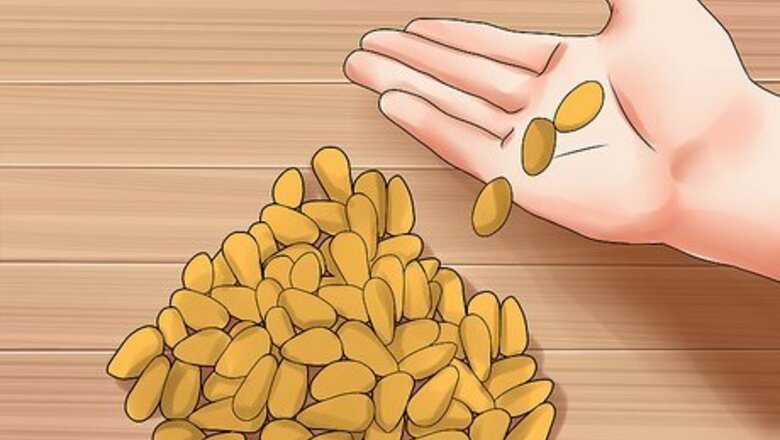
views
X
Research source
To shell pine nuts, you have to remove the outer hard shell that surrounds them. Depending on the variety of pine nut you're working with, this can take quite a bit of work, but it will be worth the effort.
Getting Ready

Gather your unshelled pine nuts. If you have simply purchased shelled pine nuts, then you can skip this step. However, if you're looking to gather your own pine shells, then you should know that it's a lengthy process that can take months. Here's what you have to do: For the gray pine, you should collect the cones in September or October and keep them in an airy, but dry place, such as a garage. The cones should still be tightly closed at this point. Wait for the cones to slowly open, revealing their nuts. Then, bang the cones around in a gunnysack until all of the nuts fall out. Alternately, you pick them out by hand, if you don't mind getting resinous pitch stuck to them. Toss out the winged part of the shell that connects the shell to the cone. Remove any nuts with holes in them; this means bugs have gotten to them.
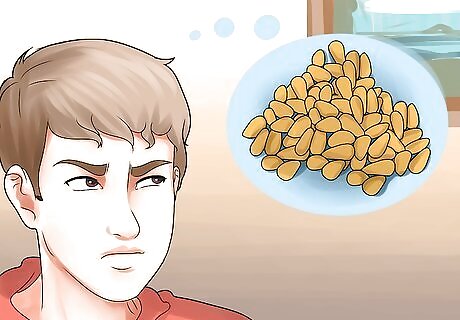
Identify your species of pine nut. It's important to know which type of pine nut species you're dealing with. Pine nuts can have soft or hard shells, and hard-shelled nuts shouldn't be cracked with your teeth, or you could hurt yourself. Here are the main types of pine nut you need to know: The New Mexico pinon pine nut. This is a buttery nut that is wild and hand harvested. These are the most valuable pine nut in the world and they have a hard shell that is too hard to crack with your fingers or teeth. The Italian Stone pine. This nut is popular in Europe and throughout the Mediterranean. It is a longer, rounder nut. The Chilgoza pine nut. These nuts are typically found in Afghanistan or Pakistan and they are long and boat-shaped with a sharp end. They are typically shelled by roasting over an open fire; they are more rare. The gray pine nut. Typically found in Northern California, these nuts have a bit of a softer shell. The Nevada pine nut. These are sweeter, fruitier, larger, and easier to shell.

Make sure to refrigerate your nuts. Unshelled nuts have a long shelf life if they are kept refrigerated, so make sure you place them in the fridge if you don't plan on shelling them right away. However, once unshelled, your nuts may only last a few weeks, or even just a few days, without the refrigerator, so you should refrigerate them as soon as you can if you don't plan on eating them right away. Many people like to put pine nuts in the freezer to give them an extra crunchy taste and to make them last longer, while others maintain that this takes away some of their rich, nutty flavor.
Shelling Hard Pine Nuts
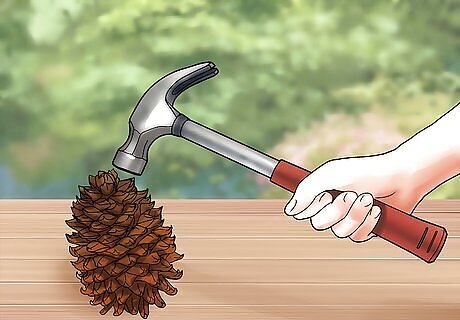
Use a hammer on tougher pine nuts. If you don't care about maintaining the integrity of the nut and are working with a tougher nut to crack, then you may just want to place the nuts on a solid surface and hit them with a hammer. Aim to do it a bit more softly so you crack the shells without pulverizing the nuts. Now, this is likely to make a big mess or put a dent in your floor, so try placing them on a piece of cardboard or in a thick plastic bag outside, so you don't have any property damage as you try to break those stubborn nuts out of their shells. This method is not for the faint of heart and does require some power. Once you're done, you can remove the nuts from the bag and peel off the extra shell.
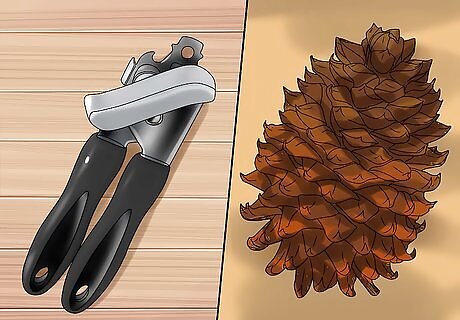
Shell the pine nuts with a can opener. That's right. If you place the pine nut in the notched section of the can opener, right where the handles meet up, you can use the can opener as a kind of improvised nutcracker. This may do some damage to your can opener and it may take quite a while, as you'll be shelling the nuts one nut at a time, but it will give you the results you're looking for. Once you've cracked all of the shells of the nuts using a can opener, you can peel the remaining shells away with your hands.
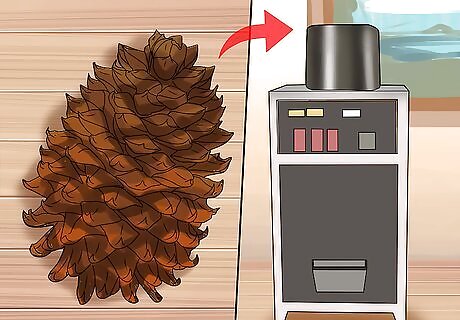
Use a pine nut shelling machine. If you want to invest in a pine nut shelling machine, this can make your job much easier. Though you'll have to pony up some money up front, it can save you money in the end if you plan on regularly shelling pine nuts. Pine nuts are much cheaper shelled than unshelled, so this may save you money in the end. Here's all you have to do to use one: Place pine nuts of a similar size into the machine so that it is adjusted for their side. When you've finished with nuts of that size, put in nuts of a different size. Wait for the nuts to come out of the machine without their shells. Brush off any extra shells and enjoy.
Shelling Soft Nuts
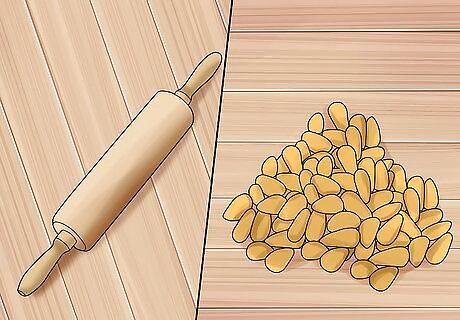
Use a roller to shell pine nuts. For softer pine nuts, you can simply place these nuts in a big plastic bag, push all the air out of it, place it on a flat surface, and then use a wooden roller to roll back and forth over the nuts. Continue doing this until you hear and see the shells of the nuts cracking, revealing the meat of the nut. This can take a little while, and you can roll the roller over smaller batches of nuts for best results. Once you've cracked all of the shells, simply remove the nuts from the plastic bags and peel off the remaining shells with your fingers.
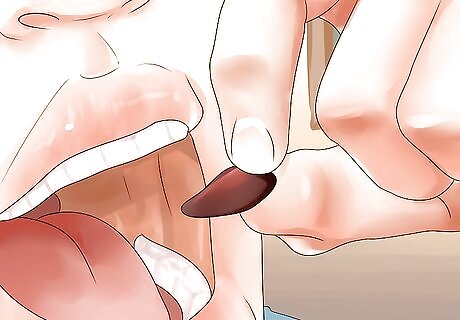
Use your mouth. Though using your mouth to crack pine nuts isn't the most recommended method, it will work in a pinch if you're using soft-shelled seeds such as the gray pine nut. Simply do what you would do to crack a sunflower seed's shell: place the nut in the back of your mouth and bite down on it a bit gently, until you hear the shell cracking. Then, remove the nut from your mouth and peel away the rest of the shell. Be careful not to bite down too hard if you want to keep your teeth healthy. This method is one of the best for preserving the original shape of the pine nut, if that's important to you.
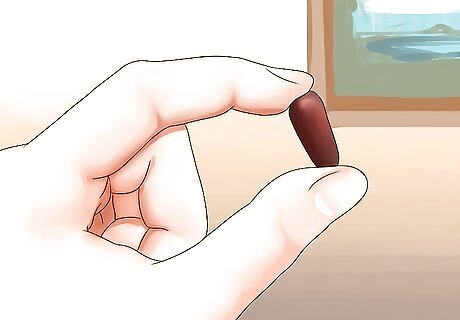
Use your thumb and forefinger. If you have a soft nut on your hands, then you may be able to crack it with the force of your hands alone. Simply place the nut between your thumb and forefinger and apply pressure to it until you hear and see a crack. Then, use your hands to peel the nut the rest of the way. This will be a repetitive motion and may take a while, but it can be better to use your hands than your teeth. This will also take a while because you'll be shelling each nut individually.
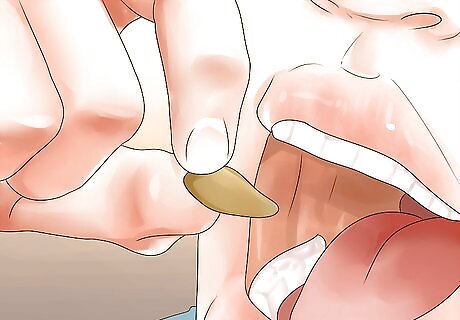
Enjoy. Once you've shelled your nuts, you can enjoy them raw or use them in a variety of recipes. They are tasty, fairly rare, and add a buttery, rich flavor to any meal. Here are some things you can do with them: Enjoy them raw, as a snack. Use them to make pesto to use in pasta or fish or poultry-based dishes. Lightly toast them in the oven and enjoy their crisp taste. Add them to any salads, from goat cheese and beet salads to salads with brie and orange slices.




















Comments
0 comment